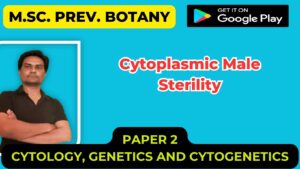![]()
Translation
- The synthesis of protein from mRNA involves translation of the language of nucleic acids into language of proteins.
- For initiation and elongation of a polypeptide, the formation of aminoacyl transfer RNAs is a prerequisite,
Formation of Aminoacyl tRNA
a) Activation of amino acid
- This reaction is brought about by the binding of an amino acid with ATP and is mediated by specific activating enzymes known as aminoacyl tRNA synthetases or aaRs.
- As a result of this reaction between amino acid and adenosine triphosphate, mediated by specific enzyme, a complex (amino acyl-AMP- enzyme complex) is formed.
- Amino acyl-RNA synthetases are specific with respect to amino acids.
- For different amino acids, different enzymes would be required.
AA + ATP –ENZYME- (aa1-AMP) -Enz1 + PPi
B) The transfer of amino acid to tRNA
- The aminoacyl-AMP-enzyme complex, formed during the step outlined above, reacts with a particular tRNA and transfers the amino acid to the tRNA.
- A particular amino acid would require a particular enzyme and a particular species of tRNA.
- This would mean that for 20 amino acids, at least 20 different enzymes and also at least 20 different t-RNA species would be required.
(aa1-AMP) Enz1 + t-RNA1 —— aa1- t-RNA1 + AMP + Enz1

Initiation of Polypeptide
- The initiation of polypeptide chain is always brought about by the amino acid methionine, which is regularly coded by the codon AUG,
- In eukaryotes, formulation of initiating methionine is not brought about due to the absence of tRNAfmet in plants and animals.
- Initiation in higher organisms will therefore take place without formylation.
Initiation in eukaryotes
- Initiation of the polypeptide chain in eukaryotes is similar to that of prokaryotes, except the following minor differences.
- (i) In eukaryotes there are more initiation factors.
- They are named by putting a prefix ‘e’ to signify their eukaryotic origin.
- These factors are eIF1, eIF2, eIF3, eIF4A, eIF4B, eIF4C, eIF4D, eIF4F, eIF5 and eIF6.
- (ii) In eukaryotes, formylation of methionine does not take place.
- (iii) In eukaryotes, smaller subunit associates with initiator tRNA-imet, without the help of mRNA, while in prokaryotes, generally the 30S-mRNA complex is first formed which then associates with f-met-tRNAfmet.
Kozak’s ribosome scanning hypothesis for translation in eukaryotes
- In 1983, Marilyn Kozak proposed a hypothesis for initiation of translation by eukaryotic ribosome.
- According to this hypothesis, the 40S smaller subunit of a eukaryotic ribosome with its associated met-tRNA moves down the mRNA from the 5′ end, until it encounters the first AUG.
- At this point, the 60S subunits join and the translation begins.
- The 80S ribosome, after reaching termination, releases protein and dissociates in two subunits.
Protein Synthesis Process
The overall mechanism of protein synthesis in eukaryotes is basically the same as in prokaryotes.
However, there are some significant differences:
- Whereas a prokaryotic ribosome has a sedimentation coefficient of the 70S and subunits of 30S and 50S, a eukaryotic ribosome has a sedimentation coefficient of 80S with subunits of 40S and 60S.
- The composition of eukaryotic ribosomal subunits is also more complex than prokaryotic subunits but the function of each subunit is essentially the same as in prokaryotes.
- In eukaryotes, each mRNA is monocistronic, that is, discounting any subsequent post-translational cleavage reactions that may occur; the mRNA encodes a single protein. In prokaryotes, many mRNAs are polycistronic, that is they encode several proteins. Each coding sequence in a prokaryotic mRNA has its own initiation and termination codons.
- Initiation of protein synthesis in eukaryotes requires at least nine distinct eukaryotic initiation factors (eIFs) compared with the three initiation factors (IFs) in prokaryotes.
- In eukaryotes, the initiating amino acid is methionine, not N-formylmethionine as in prokaryotes.
- As in prokaryotes, a special initiator tRNA is required for initiation and is distinct from the tRNA that recognizes and binds to codons for methionine at internal positions in the mRNA. When charged with methionine ready to begin initiation, this is known as Met-tRNAimet
- The main difference between initiation of translation in prokaryotes and eukaryotes is that in bacteria, a Shine–Dalgarno sequence lies 5’ to the AUG initiation codon and is the binding site for the 30S ribosomal subunit.
- In contrast, most eukaryotic mRNAs do not contain Shine–Dalgarno sequences. Instead, a 40S ribosomal subunit attaches at the 5’ end of the mRNA and moves downstream (i.e. in a 5’ to 3’ direction) until it finds the AUG initiation codon. This process is called scanning.
- Prokaryotic translation requires no helicase, presumably because protein synthesis in bacteria can start even as the mRNA is still being synthesized whereas, in eukaryotes, transcription in the nucleus and translation in the cytoplasm are separate events that allow time for mRNA secondary structure to form.
Protein synthesis (or translation) takes place in three stages:
- Initiation
- Elongation and
- Termination
Initiation of Protein Synthesis

- The first step is the formation of a pre-initiation complex consisting of the 40S small ribosomal subunit, Met-tRNAimet, eIF-2, and GTP.
- The pre-initiation complex binds to the 5’ end of the eukaryotic mRNA, a step that requires eIF-4F (also called cap-binding complex) and eIF-3.
- The eIF-4F complex consists of eIF-4A, eIF-4E, and eIF-4G; eIF-4E binds to the 5’ cap on the mRNA whilst eIF-4G interacts with the poly (A) binding protein on the poly (A) tail.
- The eIF-4A is an ATP-dependent RNA helicase that unwinds any secondary structures in the mRNA, preparing it for translation.
- The complex then moves along the mRNA in a 5’ to 3’ direction until it locates the AUG initiation codon (i.e. scanning).
- The 5’ untranslated regions of eukaryotic mRNAs vary in length but can be several hundred nucleotides long and may contain secondary structures such as hairpin loops. These secondary structures are probably removed by initiation factors of the scanning complex.
- The initiation codon is usually recognizable because it is often (but not always) contained in a short sequence called the Kozak consensus (5’-ACCAUGG-3’).
- Once the complex is positioned over the initiation codon, the 60S large ribosomal subunit binds to form an 80S initiation complex, a step that requires the hydrolysis of GTP and leads to the release of several initiation factors.
Elongation of Polypeptide
- Elongation depends on eukaryotic elongation factors.
- Three elongation factors, eEF-1A, eEF-IB, and eEF-2, are involved which have similar functions to their prokaryotic counterparts EF-Tu, EF-Ts and EF-G.
- At the end of the initiation step, the mRNA is positioned so that the next codon can be translated during the elongation stage of protein synthesis.
- The initiator tRNA occupies the P site in the ribosome, and the A site is ready to receive an aminoacyl-tRNA.
- During chain elongation, each additional amino acid is added to the nascent polypeptide chain in a three-step microcycle.
- The steps in this microcycle are:
- Positioning the correct aminoacyl-tRNA in the A site of the ribosome,
- Forming the peptide bond and
- Shifting the mRNA by one codon relative to the ribosome.
- Although most codons encode the same amino acids in both prokaryotes and eukaryotes, the mRNAs synthesized within the organelles of some eukaryotes use a variant of the genetic code.
- During elongation in bacteria, the deacylated tRNA in the P site moves to the E site prior to leaving the ribosome. In contrast, although the situation is still not completely clear, in eukaryotes the deacylated tRNA appears to be ejected directly from the ribosome.

Formation of peptide bond
- This is a catalytic reaction during which a peptide bond is formed between the free carboxyl group of the peptidyl tRNA at the ‘P’ site and the free amino group present with amino acyl tRNA, which is available at the A site.
- The 50S rRNA has peptidyl transferase activity, so that the ribosome is described as a ribozyme.
- According to this displacement model, the peptidyl chain remains in a constant position relative to the ribosome, while the tRNA moves during the peptide reaction.
- After the formation of peptide bonds, the tRNA at ‘P’ site is deacylated and the tRNA at ‘A’ site now carries the polypeptide.
Translocation of peptidyl tRNA From ‘A’ to ‘P’ site.
- The peptidyl tRNA present at ‘A’ site is now Translocated to ‘P’ site.
- For translocation of peptidyl tRNA from ‘A’ site to P site, there are two models available:
- (i) According to two sites model, deacylated tRNA is liberated from ‘P’ site, and with the help of one GTP molecule and an elongation factor EF-G, the peptidyl tRNA is translocated from ‘A’ to ’P’ site.
- Thus according to this model, tRNA is either entirely in the A site or entirely in the P Site.
- The requirement of EF-G and GTP for translocation was revealed by the use of antibiotics.
- The elongation factor EF-G binds to the ribosome and is released on hydrolysis of GTP, which is a ribosomal function. EF-G and EF-Tu cannot bind to ribosome simultaneously, so that the entry of a fresh aa-tRNA on ‘A’ site and the translocation of peptidyl tRNA from ‘A’ to ‘P’ site has to follow each other and cannot occur simultaneously.
- In eukaryotes, the elongation factor needed for translocation is called eEF-2, for the formation of one peptide bond.
- One ATP molecule and two GTP molecules (one for transfer of aa-tRNA to ‘A’ site and the other for translocation of peptidyl tRNA from ‘A’ to ‘P’ site) are required.
Termination of Polypeptide
Terminations in mRNA with stop codon
- Termination of the polypeptide chain is brought about by the presence of any one of the three combination codons, namely UAA,UAG and UGA.
- These termination codons are recognized by one of the two release factors RF1 and RF2.
- The release factors to act on ‘A’ site, since suppressor rRNA is capable of recognizing by entry at ‘A’ site.
- A third release factor RF3 stimulate the action of RF1 and RF2 in a GTP-dependent and condon independent manner GTP molecule is hydrolysed during release of a polypeptide, when RF3 stimulates RF1 and RF2. .
- For release reaction, the poly peptidyl tRNA must be present on ‘P’ site and the release factors help in splitting of the carboxyl group between the polypeptide and the last tRNA carrying this chain.
- Polypeptide is thus released and the ribosome dissociates into two subunits with the help of ribosome release factor or RRF.
- It has been shown that the translation apparatus in chloroplasts and mitochondria differs from that in cytoplasm in eukaryotes in the following respects.
- (i) Ribosomes in these organelles are smaller in size than these in cytoplasm.
- (ii) The tRNAs are specific and differ, the number of tRNAs in mitochondria being 22 as against 55 in cytoplasm.
- (iii) Initiation of translation takes place by formyl-methionyl tRNA both in chloroplasts and mitochondria, although no formylation takes place in cytoplasm.
- (iv) Translation in chloroplasts and mitochondria can be inhibited by chloramphenicol.



